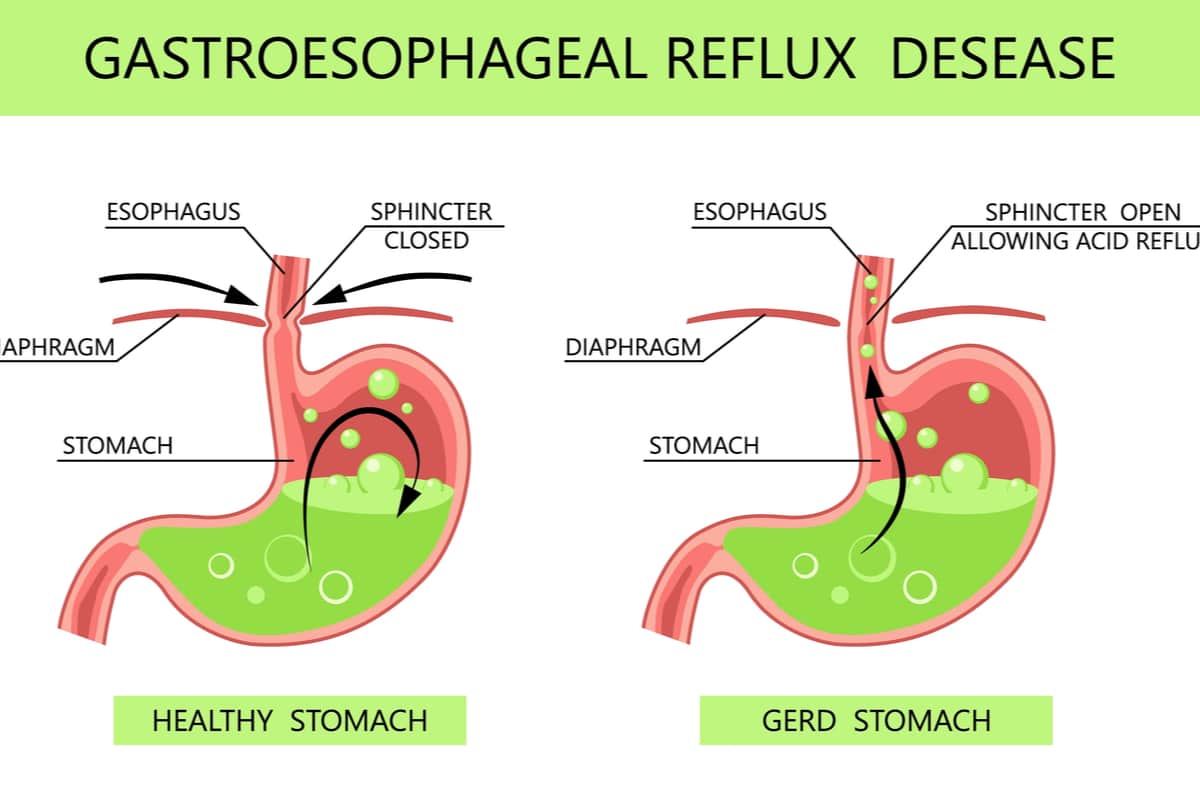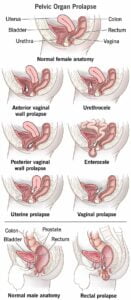Diagnosis of GERD
Your healthcare provider may diagnose GERD based on your symptoms and a physical examination. To confirm the diagnosis or check for complications, your doctor might recommend the following tests:
Upper Endoscopy: A thin, flexible tube with a light and camera (endoscope) is inserted down your throat. This allows your provider to visualize the inside of your esophagus and stomach. While reflux may not always be visible during this test, it can help detect inflammation of the esophagus (esophagitis) or other complications. In some cases, a tissue sample (biopsy) may be taken for testing, especially if Barrett esophagus is suspected. Additionally, if narrowing of the esophagus is observed, it can be stretched or dilated during the procedure to improve swallowing difficulties (dysphagia).
Ambulatory Acid (pH) Probe Test: A monitor placed in your esophagus tracks when and how long stomach acid regurgitates. The monitor is connected to a small computer that you wear around your waist or over your shoulder. The monitoring device can be a thin, flexible tube (catheter) threaded through your nose or a clip placed in your esophagus during an endoscopy. The clip eventually passes out in your stool after approximately two days.
X-ray of the Upper Digestive System: After drinking a chalky liquid that coats and fills the lining of your digestive tract, X-rays are taken. This allows your doctor to visualize the silhouette of your esophagus and stomach. This method is particularly useful for individuals experiencing swallowing difficulties.
Esophageal Manometry: This test measures rhythmic muscle contractions in your esophagus during swallowing. It also assesses the coordination and force exerted by the esophageal muscles. Esophageal manometry is commonly performed in people with swallowing issues.
Transnasal Esophagoscopy: A thin, flexible tube equipped with a video camera is inserted through your nose and moved down your throat into the esophagus. The camera sends images to a video screen, allowing doctors to examine any damage in the esophagus.
Treatment of GERD
Initially, your doctor will recommend lifestyle changes and nonprescription medications. If symptoms persist, prescription medications and additional testing may be necessary.
Nonprescription Medications:
Antacids: These neutralize stomach acid. Antacids containing calcium carbonate (e.g., Mylanta, Rolaids, Tums) provide quick relief. However, they do not heal inflamed esophageal tissue damaged by stomach acid. Overusing antacids can lead to side effects like diarrhea or kidney problems.
Histamine (H-2) Blockers: These medications (e.g., cimetidine, famotidine, nizatidine) reduce acid production. While they act more slowly than antacids, they offer longer relief and may decrease stomach acid production for up to 12 hours. Stronger versions are available by prescription.
Proton Pump Inhibitors (PPIs): PPIs are potent acid blockers that allow damaged esophageal tissue to heal. Nonprescription PPIs include lansoprazole (Prevacid 24 HR), omeprazole (Prilosec OTC), and esomeprazole (Nexium 24 HR).
Remember to inform your doctor if you start taking any nonprescription GERD medication.
Prescription Medications for GERD
For stronger treatment of GERD, prescription-strength medications may be prescribed, including:
Proton Pump Inhibitors (PPIs): These are more potent versions of over-the-counter PPIs and include esomeprazole (Nexium), lansoprazole (Prevacid), omeprazole (Prilosec), pantoprazole (Protonix), rabeprazole (Aciphex), and dexlansoprazole (Dexilant). While they are generally well-tolerated, potential side effects can include diarrhea, headaches, nausea, and in rare cases, deficiencies in vitamin B-12 or magnesium levels.
H-2 Blockers: Prescription-strength options like famotidine and nizatidine are available. These medications typically have mild side effects and are well tolerated by most patients.
Surgical and Other Procedures
When medication is insufficient or long-term use is a concern, surgical options may be considered:
Fundoplication: This surgical procedure involves wrapping the top of the stomach around the lower esophageal sphincter to strengthen it and prevent acid reflux. It is often performed laparoscopically and can be complete (Nissen fundoplication) or partial (Toupet fundoplication).
LINX Device: A ring of tiny magnetic beads is placed around the junction of the stomach and esophagus. The magnetic force is strong enough to prevent acid reflux but allows food to pass through. The LINX device is implanted using minimally invasive surgery and does not interfere with airport security or MRI procedures.
Transoral Incisionless Fundoplication (TIF): This procedure tightens the lower esophageal sphincter by creating a partial wrap with polypropylene fasteners. TIF is performed through the mouth using an endoscope and does not require surgical incisions, offering a quick recovery time.
For those with a large hiatal hernia, TIF may be combined with laparoscopic hiatal hernia repair. Additionally, due to the link between obesity and GERD, weight-loss surgery may be suggested.
Lifestyle and Home Remedies
To reduce acid reflux frequency, consider these lifestyle adjustments:
- Maintain a Healthy Weight: Excess weight can increase abdominal pressure and cause acid reflux.
- Quit Smoking: Smoking impairs the function of the lower esophageal sphincter.
- Elevate the Bed Head: Use blocks or a wedge to raise the bed head by 6 to 9 inches, aiding in the prevention of nighttime heartburn.
- Sleep on Your Left Side: This position may decrease the likelihood of acid reflux.
- Avoid Lying Down Post-Meals: Wait at least three hours after eating before lying down or sleeping.
- Eat Slowly and Chew Thoroughly: Take your time with meals to aid digestion.
- Identify and Avoid Trigger Foods: Common triggers include alcohol, chocolate, caffeine, fatty foods, and peppermint.
- Wear Loose Clothing: Tight-fitting clothes can increase abdominal pressure and contribute to reflux.
Here’s a rephrased version of the content on alternative medicine and preparing for your GERD appointment:
Alternative Medicine for GERD
While certain complementary and alternative therapies like ginger, chamomile, and slippery elm are sometimes suggested for GERD management, their effectiveness in treating GERD or reversing esophageal damage has not been scientifically proven. It’s important to consult with your healthcare provider before starting any alternative treatments for GERD.
Preparing for Your Gastroenterology Appointment
When preparing to see a gastroenterologist, consider the following steps:
- Understand Pre-Appointment Restrictions: Be aware of any dietary restrictions or other instructions to follow before your appointment.
- Document Your Symptoms: Note all symptoms you’re experiencing, even if they seem unrelated to GERD.
- Identify Symptom Triggers: Keep track of foods or activities that seem to trigger your symptoms.
- List Medications and Supplements: Compile a list of all medications, vitamins, and supplements you’re taking.
- Record Medical and Personal Information: Write down any other health conditions you have and any significant personal changes or stressors.
- Prepare Questions for Your Doctor: Think of questions you want to ask, such as the cause of your symptoms, necessary tests, treatment options, and lifestyle restrictions.
- Bring Support: Consider having a relative or friend accompany you to help remember the doctor’s advice.
Questions to Ask Your Doctor
- What is the most likely cause of my symptoms?
- What tests will I need, and how should I prepare for them?
- Is my condition likely to be temporary or chronic?
- What treatment options are available?
- Are there any lifestyle restrictions I should follow?
- How can I manage my GERD along with my other health conditions?
Expectations During Your Appointment
Your doctor will likely inquire about:
- The onset and severity of your symptoms.
- The frequency and pattern of your symptoms.
- Factors that may alleviate or exacerbate your symptoms.
- Whether your symptoms disrupt your sleep.
- If symptoms are triggered by meals or lying down.
- Occurrences of regurgitation or difficulty swallowing.
- Any recent weight changes.
Feel free to use this revised content, and if you need further assistance or have additional questions, just let me know! 😊


